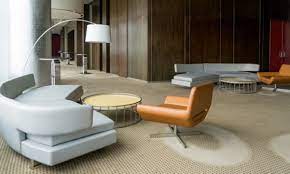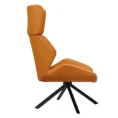In the fast-paced world of business, where constant innovation and adaptability are key, it’s easy to overlook the seemingly mundane aspects of the office environment. One such element that often goes unnoticed is office furniture. From ergonomic chairs to sleek desks, these pieces play a crucial role in shaping the work environment and, consequently, the productivity and well-being of employees. However, the significance of office furniture maintenance is frequently underestimated. In this blog post, we’ll delve into the reasons why maintaining office furniture is not just a matter of aesthetics but a strategic move for the success of any business.

1. Employee Comfort and Well-being:
- Ergonomics is not just a buzzword; it’s a fundamental aspect of office design. Well-maintained furniture contributes to a comfortable and supportive workspace, reducing the risk of musculoskeletal issues among employees.
- Regular maintenance, such as tightening loose screws or fixing wobbly chairs, ensures that employees can focus on their work without being distracted by discomfort or inconvenience.
2. Productivity Boost:
- A well-organized and well-maintained workspace fosters a positive work culture. When employees have access to properly functioning furniture, it minimizes disruptions and allows them to concentrate on their tasks.
- Broken or malfunctioning furniture can lead to delays and interruptions, impacting the overall efficiency of the workforce. Investing time and resources in maintenance can prevent such disruptions and contribute to a smooth workflow.
3. Brand Image and Professionalism:
- Your office is a reflection of your brand. A well-maintained workspace sends a positive message to clients, partners, and visitors. It communicates professionalism and attention to detail, which can be crucial for making a lasting impression.
- Shabby or worn-out furniture may convey a lack of care or investment in your company’s image, potentially influencing the perception of your brand.
4. Cost-Effective Approach:
- Regular maintenance is a cost-effective strategy compared to the expense of replacing damaged or broken furniture. Addressing issues promptly can extend the lifespan of office furniture, saving the company money in the long run.
- Additionally, preventive maintenance helps identify potential problems before they escalate, reducing the need for major repairs or replacements.
5. Sustainability and Environmental Responsibility:
- In an era where sustainability is a growing concern, maintaining office furniture aligns with environmental responsibility. Regular maintenance reduces the need for frequent replacements, contributing to a more sustainable and eco-friendly workplace.
- Companies that prioritize sustainability not only contribute to a healthier planet but also appeal to environmentally conscious employees and customers.
Conclusion:
Office furniture is not just a collection of inanimate objects; it forms the backbone of a productive and thriving work environment. By recognizing the importance of regular maintenance, businesses can create a workspace that enhances employee well-being, boosts productivity, projects a positive brand image, is cost-effective, and aligns with environmental sustainability. In the grand scheme of business success, the humble act of maintaining office furniture plays a pivotal role in shaping a company’s future.





